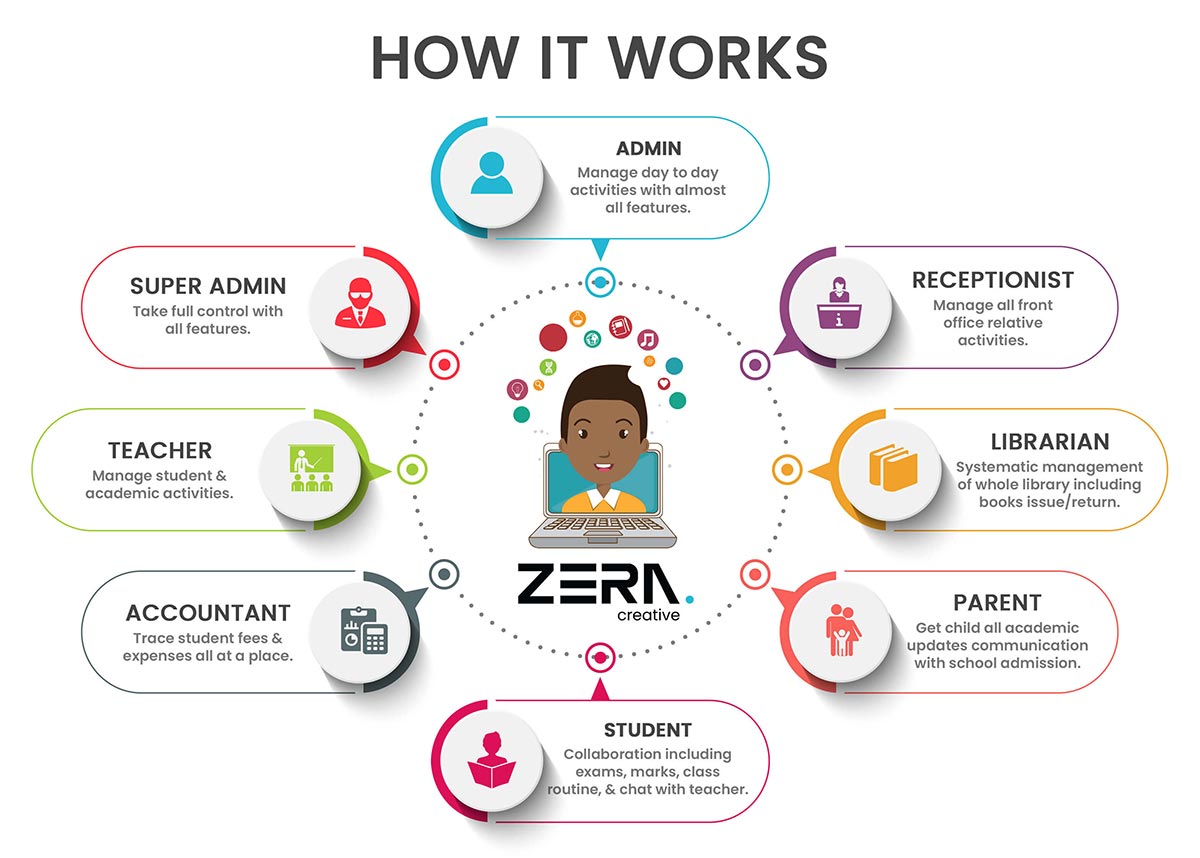Introduction:
Distance education is a type of education that is delivered remotely, often over the internet, and enables students to learn from a distance. School management systems are software programs used to manage various aspects of a school, including student records, grades, and schedules. School management systems provide essential tools and services that make distance education possible. They also provide effective communication solutions for instructors and students and facilitate the dissemination of course materials.
Benefits of using a school management system for distance education programs:
Here are some additional benefits of using a school management system for distance education programs:
-
Improved student engagement:
A school management system can help increase student engagement and improve academic outcomes by providing students with various tools and resources to support their learning.
-
Convenience:
A school management system allows students to access course materials and resources from any location at any time, making it easier for them to fit their studies into their busy schedules.
-
Flexibility:
A school management system can be adapted for a remote education program, allowing administrators to fulfill the demands of students and instructors.
-
Cost-effectiveness:
A school management system can help to reduce the cost of delivering distance education programs by eliminating the need for expensive physical materials and in-person support.
-
Enhanced support:
A school management system can provide students with access to a range of support services, including tutoring, advising, and technical support, helping them to succeed in their studies.
Overall, a school management system can be a valuable tool for managing and supporting distance education programs, helping to ensure students have the resources and support they need to succeed.
Tips to choose the right school management system:
Here are some additional tips for choosing the right school management system software:
-
Consider your budget and resources:
It's essential to determine how much you are willing and able to spend on a school management system and consider ongoing costs such as maintenance, updates, and support.
-
Determine your program's specific needs and goals:
Consider your remote education program's needs and goals before choosing a system. If your program focuses on online classes, consider a system that supports online learning.
-
Research and compare different options:
Many school management systems are available, so evaluate choices to pick one that suits your needs and budget. Features, functionality, cost, and vendor support are essential.
-
Seek feedback and advice from other distance education programs:
Contact remote education programs for school management advice. Ask about their experiences with different systems, obstacles, and accomplishments.
Overall, by evaluating your budget and resources, establishing your program's needs and goals, researching and comparing choices, and soliciting feedback from other distance education programs, you can choose the proper school administration system for your program.
Conclusion:
In conclusion, a school management system can help manage and support online education. Improved communication and collaboration between students, teachers, and administrators; simple access to course materials and assignments; faster grading and assessment processes; greater security and privacy; and the ability to track student progress and attendance.
If you are considering implementing a distance education program, consider using a school management system to help manage and support your program.


